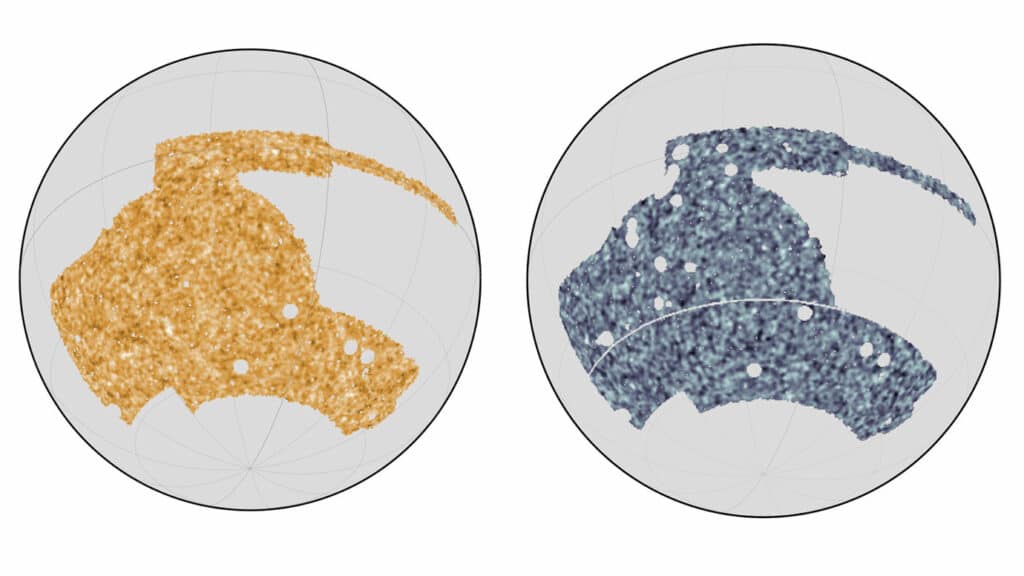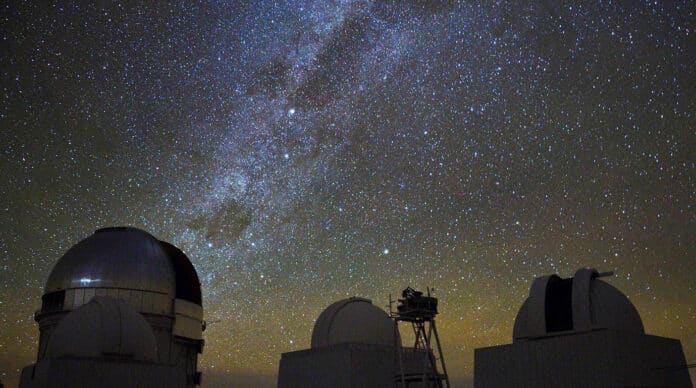When the Universe began after the Big Bang, the matter in the Universe a very hot. This matter was spread outward, cooled, clumped as it went, and gradually formed planets.
Scientists are highly interested in following the journey of this matter because they can try to replicate what happened and what forces had to be at work by seeing where it all ended up.
To do so, scientists need a lot of data collected with telescopes.
A group of scientists, including several with the University of Chicago and Fermi National Accelerator Laboratory, have released one of the most precise measurements ever made of how matter is distributed across the Universe today. Scientists combined the data from two major telescope surveys of the Universe, the Dark Energy Survey and the South Pole Telescope.
UChicago astrophysicist Chihway Chang, one of the lead authors of the studies, said, “It functions like a cross-check, so it becomes a much more robust measurement than if you just used one or the other.”
The analysis examined a phenomenon known as gravitational lensing in both instances. As light traverses the cosmos, it may experience slight bending as it passes by galaxies and other objects with strong gravitational pull.
Because both ordinary matter and dark matter experience gravity, this method captures both ordinary matter and dark matter.
The scientists could determine where all the matter in the Universe ended up by carefully analyzing these two sets of data. It is more accurate than earlier measurements, reducing the range of potential outcomes for this situation. Most of the results fit perfectly with the currently accepted best theory of the Universe.
Analysis coauthor and University of Hawaii astrophysicist Eric Baxter said, “But there are also signs of a crack—one that has been suggested in the past by other analyses, too. It seems like there are slightly less fluctuations in the current Universe than we would predict assuming our standard cosmological model anchored to the early Universe.”

Scientists noted, “Specifically, today’s readings find the universe is less “clumpy”—clustering in certain areas rather than evenly spread out—than the model would predict. If other studies continue to find the same results, it may mean something is missing from our existing model of the Universe. Still, the results are not yet to the statistical level that scientists consider ironclad. That will take further study.”
The analysis involved more than 150 researchers. It is a landmark as it yielded useful information from two telescope surveys. This is a much-anticipated strategy for the future of astrophysics, as more large telescopes come online in the next decades, but few have been carried out yet.
Journal References:
- Y. Omori, E. J. Baxter, et al. Joint analysis of DES Year 3 data and CMB lensing from SPT and Planck I: Construction of CMB Lensing Maps and Modeling Choices. Physical Review D DOI: 10.48550/arXiv.2203.12439
- C. Chang, Y. Omori, E. J. Baxter, et al. Joint analysis of DES Year 3 data and CMB lensing from SPT and Planck II: Cross-correlation measurements and cosmological constraints. Physical Review D. DOI: 10.48550/arXiv.2203.12440
- T. M. C. Abbott, M. Aguena, A. Alarcon, et al. Joint analysis of DES Year 3 data and CMB lensing from SPT and Planck III: Combined cosmological constraints. Physical Review D. DOI: 10.48550/arXiv.2206.10824
